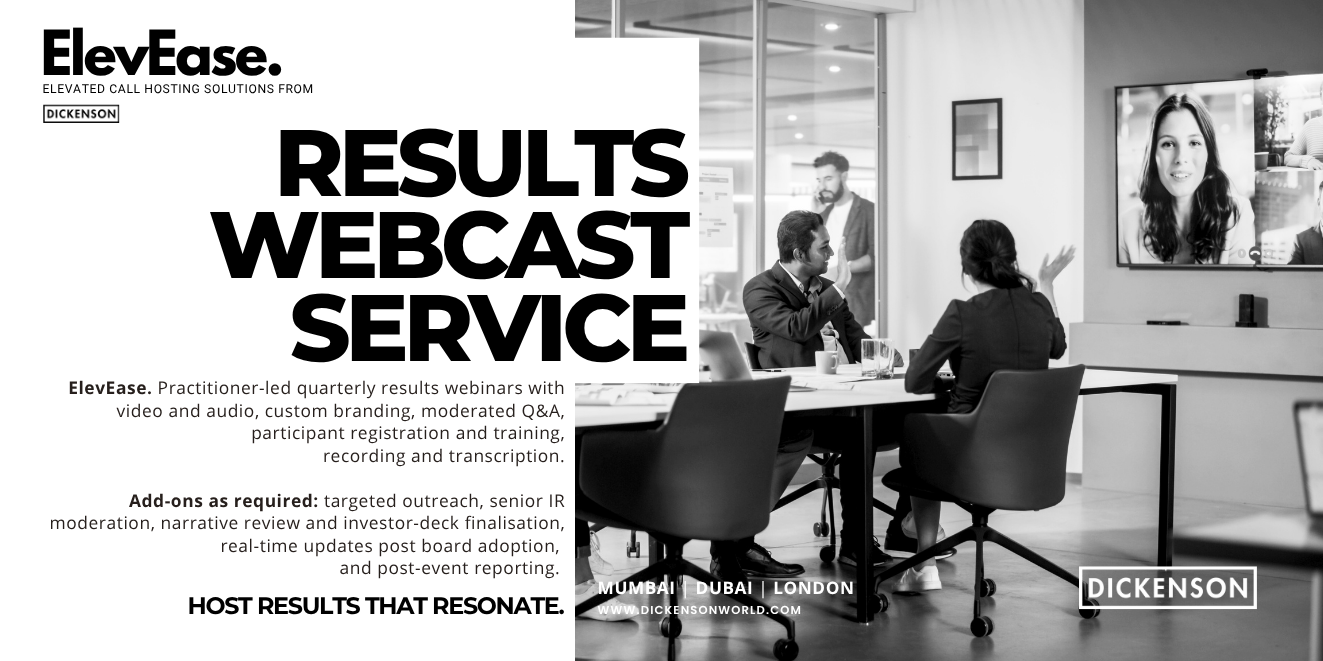IR & AR WEEKLY ALERTS — Issue 106
Coverage window: 10–16 November 2025
Scope: United Kingdom • India • United Arab Emirates (Dubai) • Qatar • Saudi Arabia
A) UK Reporters and UK-Listed Constituents
1) FRC Annual Review of Corporate Governance Reporting 2025
What changed: The FRC published its annual review of governance reporting across 100 UK-listed companies. It stresses “meaningful explanations” and notes that 2025 is the final cycle against the 2018 Code before reporting moves to the updated 2024 Code in January 2026.
What to do now:
-
Re-evidence departures and “comply or explain” statements with decision-useful reasons.
-
Map 2024 Code deltas into your 2025–26 governance workplan and audit committee calendar.
Where to reflect: Corporate Governance Report; Nomination and Remuneration Committee sections; forward-looking governance roadmap. (FRC (Financial Reporting Council))
2) Stewardship Code: preparing for streamlined reporting
What changed: The FRC issued a report to help signatories prepare for streamlined reporting under the updated Stewardship Code effective 1 January 2026.
What to do now:
-
For asset-owner subsidiaries and UK pension fiduciaries within your group, align engagement case studies and outcomes to the streamlined expectations.
-
Refresh your “engagement with shareholders” narrative to show measurable outcomes.
Where to reflect: Section 172 statements; Investor Engagement and Stakeholder sections; Sustainability reporting where stewardship intersects with capital allocation. (FRC (Financial Reporting Council))
Watchlist: FCA Primary Market Bulletin 58 signposts new forms and checklists expected around 24 November for the regime commencing 19 January 2026; ensure your transaction timetables and internal checklists are updated. (FCA)
B) INDIA: SEBI, NSE, Exchange Hygiene and Investor Protection
1) SEBI consultation on IPO lock-in reforms (ICDR)
What changed: SEBI released a consultation proposing changes to lock-in for pre-issue capital held by non-promoters at IPO, among other ICDR items.
What to do now:
-
For candidates planning IPOs in 2026, run sensitivity analyses on free float and sell-down sequencing.
-
Update draft DRHP language templates and board briefings on promoter and non-promoter lock-ins.
Where to reflect: Offer document boilerplates; Capital Structure section; Risk Factors. (Securities and Exchange Board of India)
2) SEBI High-Level Committee report on conflict-of-interest controls
What changed: A report on conflicts, disclosures and related matters concerning SEBI members and officials was submitted, reinforcing expectations around integrity safeguards.
What to do now:
-
Recheck your own COI and insider-list hygiene across board advisers and key management.
-
Strengthen “inside information governance” boxes in Annual Reports for UK-style clarity.
Where to reflect: Corporate Governance and Compliance sections; Board Policies repository on the website. (Securities and Exchange Board of India)
3) SCORES discipline and investor-education drives
What changed: SEBI published the list of entities with complaints pending beyond three months and conducted the third Niveshak Shivir with IEPFA to facilitate claims resolution.
What to do now:
-
Ensure your company is not on the SCORES backlog list and publish a clear dividend-claim and IEPF guide on your website.
-
Monitor investor-communication channels for misinformation during claim drives.
Where to reflect: Investor Information microsite; Shareholder Information section; Investor Charter. (Securities and Exchange Board of India)
4) Operational calendar: F&O and capital market settlements
What changed: NSE clearing notices continue to govern corporate-action adjustments and settlements in November; teams should verify contract adjustments and T+0/T+1 calendars when guiding investors.
What to do now:
-
Sync finance, brokers and registrars on settlement and adjustment parameters for November series.
Where to reflect: Investor FAQs; Earnings call scripts; MD&A Market Risk narrative. (NSE India)

SEBI’s “>3 months pending” list and the latest Niveshak Shivir
WHAT THE “>3 MONTHS PENDING ON SCORES” LIST IS
SEBI periodically publishes the names of listed companies, registered intermediaries and market infrastructure institutions that have investor complaints pending for more than three months on the SCORES platform. The current list is dated 11 November 2025 and covers pendency as of 31 October 2025. It is released as a Public Notice on SEBI’s website and forms part of a recurring series through the year. (Securities and Exchange Board of India)
WHY ENTITIES APPEAR ON THE LIST
Under SCORES 2.0, entities must resolve a complaint and submit an Action Taken Report to the complainant within 21 calendar days of assignment. Items that remain unresolved beyond this service standard, including where a complainant has sought a review, can migrate into longer pendency buckets and may ultimately surface on SEBI’s monthly “>3 months” list. (scores.sebi.gov.in)
THE BASIC MECHANICS AND ESCALATION
-
Complaints are auto-forwarded to the concerned entity on SCORES. The entity must resolve and upload the Action Taken Report within 21 calendar days, after which the ATR is routed to the complainant. (Securities and Exchange Board of India)
-
SCORES allows complainants a defined review window. Items can remain pending during this review period if the complainant contests the closure. (scores.sebi.gov.in)
-
The 2023 circular also links SCORES to India’s Online Dispute Resolution framework to push closure where bilateral resolution stalls. (Securities and Exchange Board of India)
WHAT ISSUERS SHOULD DO THIS WEEK
-
Check the 31 October 2025 list and ensure your name does not appear. If it does, assign ownership to close each line item, upload ATRs with documentary evidence, and contact the complainant to pre-empt review rejections. (Securities and Exchange Board of India)
-
Re-brief your Company Secretary’s office and the RTA on SCORES 2.0 timelines and the review flow. Include the 21-day service standard and the review window in internal SOPs. (scores.sebi.gov.in)
-
Publish an “Investor Help” page that explains how to lodge and track complaints on SCORES, with the official portal link and helpline numbers. (scores.sebi.gov.in)
WHAT THE “NIVESHAK SHIVIR” IS
SEBI and the Investor Education and Protection Fund Authority are jointly running “Niveshak Shivir” as a one-stop camp to reduce unclaimed assets and facilitate investor claims for unpaid dividends and shares. The third edition was held in Amritsar on 1 November 2025. SEBI’s press note confirms the event, and the Government’s Press Information Bureau records operational details including on-the-spot dividend-claim support, KYC and nomination updates, direct RTA access and participation by more than 223 investors. (Securities and Exchange Board of India)
For context, the second edition took place in Hyderabad on 2 September 2025, which indicates this is a continuing joint programme rather than a one-off event. (Securities and Exchange Board of India)
How you can leverage it as an issuer
-
Coordinate with your RTA to prepare a pack for investors: step-by-step claim instructions, KYC and nomination checklists, specimen forms and email contacts for your IEPF Nodal Officer. Link these from your IR site and factsheets. (Press Information Bureau)
-
Add an “Unclaimed dividends and shares” explainer to your Investor Services microsite. Include direct links to SCORES, IEPF resources and your RTA’s claim page. (scores.sebi.gov.in)
-
Where your shareholder base clusters near an announced Shivir, publicise the camp dates and venues on your website and exchange filings to improve resolution rates. (Press Information Bureau)
WHAT TO REFLECT IN DISCLOSURES
-
MD&A and Shareholder Information: A brief note stating that the company monitors SCORES pendency and has standard operating procedures aligned to the 21-day resolution standard. Add a table or short narrative on IEPF claim facilitation. (scores.sebi.gov.in)
-
Website hygiene: Prominent placement of the official SCORES link and helplines to deter investors from unofficial channels. (scores.sebi.gov.in)
C) Dubai International Financial Centre (DIFC) and DFSA
1. DFSA AI survey findings and governance expectations
What changed: DFSA reported that AI adoption among authorised firms in the DIFC has risen to more than half of firms, with generative AI usage having almost tripled year on year, and flagged ongoing work on expectations around AI.
What to do now:
-
If you operate in DIFC or market to DIFC investors, document AI use in finance and risk functions, including controls, data governance and board oversight.
Where to reflect: Operational Risk and Technology Controls in MD&A; ESG governance where AI impacts conduct and fairness. (DFSA)
2) DFSA scam alerts and disclosure database activity
What changed: DFSA issued an alert about a fake licence and continues to publish frequent disclosures by issuers and listing authority notices.
What to do now:
-
Add channel-authenticity language and “official links” panels across your IR website, and instruct investors to verify against DFSA public registers and the disclosure database.
Where to reflect: Safe-use notices on IR pages; Social-media bios; Press releases. (DFSA)

D) QATAR
No material regulator-led reporting or listing rule changes were published during the window. Operational notices and index review results earlier in November remain informational. Maintain standard IR hygiene and continue to monitor QSE notices. (QE)
E) SAUDI ARABIA
1. Class action compensation order in Mohammad Al-Mojil Group case
What changed: The Capital Market Authority announced that certain former board members and employees were ordered to compensate 668 claimants with a combined SAR 90.8 million.
What to do now:
-
Re-evaluate litigation and contingent liability disclosures; revisit director and officer training on disclosure discipline and market conduct.
Where to reflect: Legal proceedings notes; Risk Management; Board accountability narrative. (Capital Market Authority)
2) Ongoing supervisory actions and approvals
What changed: The CMA continues to publish approvals and supervisory actions that may affect timing and sequencing of offerings.
What to do now:
-
For KSA transactions, ensure calendars and prospectus assumptions reflect current CMA processing practices and validity periods.
Where to reflect: Transaction timetables; Prospectus boilerplates. (Capital Market Authority)



IR & AR WEEKLY ALERTS
To download and save this article.
Contact Us: To learn more or schedule a consultation, please reach out to us at www.dickensonworld.com
Email:enquiry@dickensonworld.com.


Leave A Comment